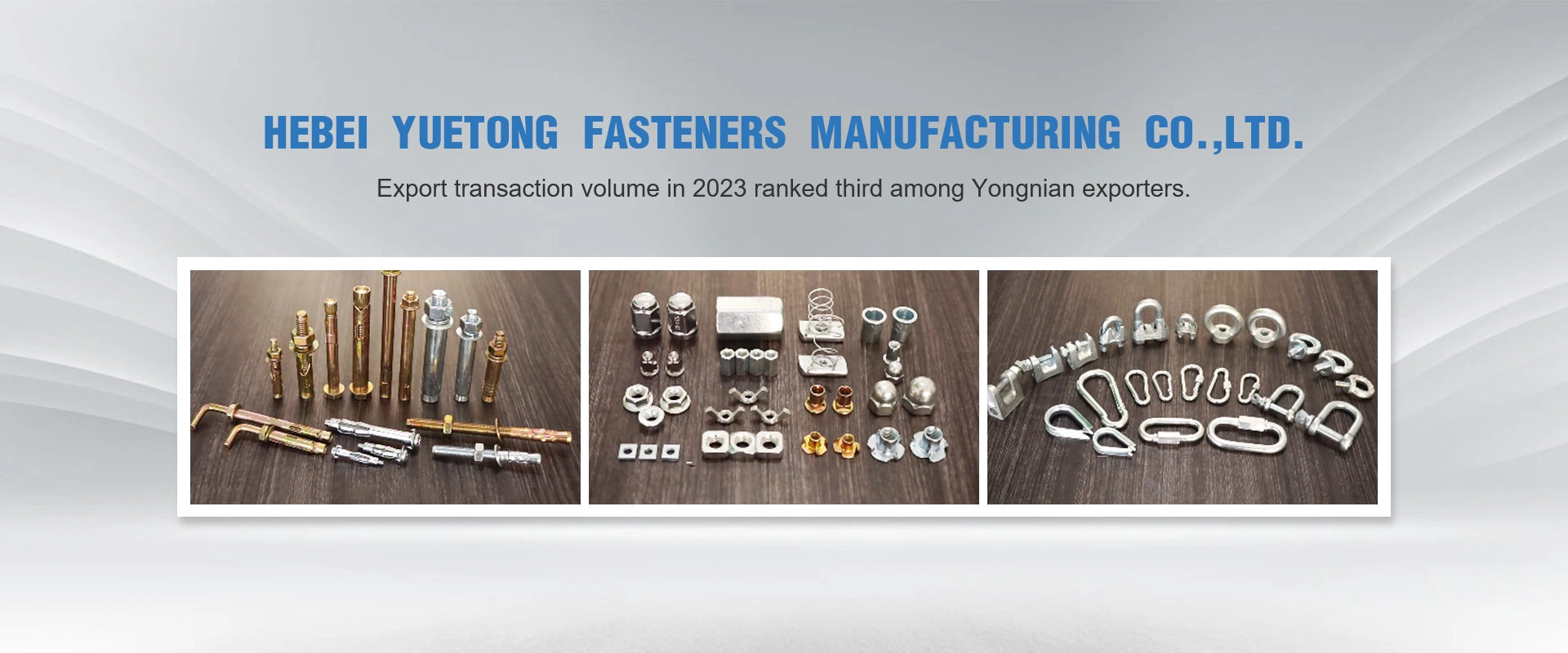Aug . 01, 2024 00:46 Back to list
Exploring the Benefits and Applications of Carbon Steel All Thread Rods in Construction and Industry
Understanding Carbon Steel All Thread Rods
Carbon steel all thread rods are versatile fasteners commonly used in construction, manufacturing, and various industrial applications. These rods, often referred to as fully threaded rods, provide superior strength and durability, making them an essential component in numerous projects. Their structure consists of a long, cylindrical rod with threads running along its entire length, which allows for easy insertion into nuts and other threaded components.
Composition and Properties
Carbon steel is an alloy composed primarily of iron and carbon, with varying carbon content affecting its properties. In all thread rods, the carbon content typically ranges from low to medium levels, which enhances the material's tensile strength, hardness, and wear resistance. Low carbon steel is more malleable and ductile, making it easier to form and shape, while medium carbon steel provides increased strength and is often used in applications that require higher load-bearing capacities.
The crucial aspect of carbon steel is its cost-effectiveness. Compared to stainless steel, carbon steel is often more affordable, making it a popular choice for projects with budget constraints. However, it is important to note that carbon steel is more susceptible to corrosion, which can limit its use in environments exposed to moisture or harsh chemicals without appropriate protective coatings.
Applications of All Thread Rods
All thread rods are particularly valued in the construction and manufacturing sectors for various reasons. Their full-length threading allows for customizable lengths when used with nuts or couplers. This flexibility makes them ideal for applications such as
1. Structural Support All thread rods are widely employed in the construction of buildings and bridges, acting as tensioning or support elements in structures. They are often used to tie down or support beams, columns, and other heavy components.
carbon steel all thread rod

2. Industrial Equipment In manufacturing, all thread rods can be utilized in machinery assembly, acting as connectors for different parts. They help secure components in place, ensuring the reliability and safety of the equipment.
3. HVAC and Plumbing All thread rods are frequently used in HVAC systems and plumbing installations where flexible and adjustable anchoring solutions are necessary. They can assist in mounting ducts, piping, and other systems.
Installation and Maintenance
Installing all thread rods is relatively straightforward, but it requires proper tools and techniques to ensure effectiveness. Rods can be cut to the desired length and should be paired with the appropriate nuts and washers for secure fastening. It's essential to ensure that the threads are properly aligned and that the rod is installed with adequate torque to prevent failure.
To maximize the lifespan of carbon steel all thread rods, especially in corrosive environments, regular maintenance and inspection are essential. Applying protective coatings, such as galvanization or painting, can enhance corrosion resistance and prolong the life of the rods.
Conclusion
Carbon steel all thread rods are indispensable in various industrial and construction applications due to their strength, versatility, and cost-effectiveness. Understanding their properties, applications, and maintenance requirements can aid engineers and builders in selecting the right materials for their projects. By leveraging the benefits of carbon steel all thread rods, professionals can ensure robust and reliable structures while optimizing their budgetary constraints.


